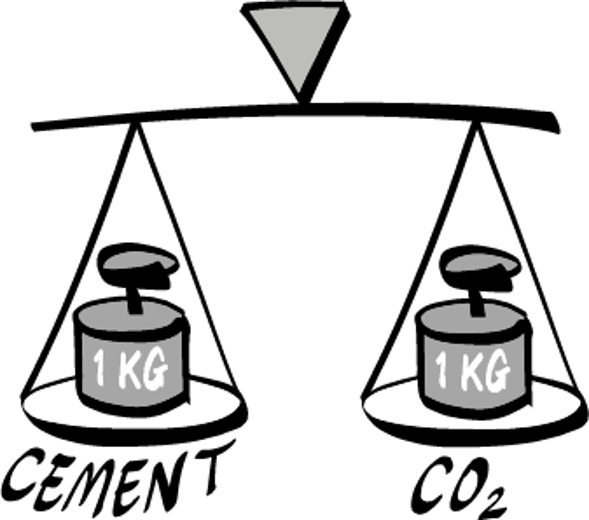
Concrete: beauty and the beast
Concrete is, after water, the most used substance in the world. The traditional Portland Cement is very robust and versatile, a real favourite construction material in different cultures. However, the use of Ordinary Portland Cement (OPC) in concrete is responsible for about 8-10% of the global CO2 emissions. OPC is currently the global market standard for concrete production.

An estimated 8 to 10% of the global CO₂ emissions
stem from the use of OPC based concrete (1 kg cement ≈ 1 kg CO₂).
Alternative technologies exist to substantially decrease this CO2 footprint: geopolymer technologies. With this technology, alternative binder materials can be used that replace OPC. This requires some modification in recipe design and processing but the end result is similar or better than the traditional OPC.


Ingredients of concrete, with traditional cement versus Geopolymer binder systems
Challenges and opportunities in Africa
Many African countries face a massive shortage of affordable housing. Concrete houses are in constant demand, despite their relatively high costs and this poses a challenge for households.
Overall, the demand for concrete is expected to significantly increase especially in developing countries, both for houses and for other applications in the build environment. This creates pressure on the environment: besides CO2 emmisions, wildlife and agricultural activities are threatened because of natural resources depletion. For example, the rich Wetlands in Uganda are being depleted at an alarming rate to cover the massive demand for clean construction sand (also used in concrete).
Opportunities for Sub Sahara Africa
There are alternatives to concrete construction that have a great socio-cultural fit and can utilise local materials that do not deplete the natural resources.
Within the field of concrete, new (geopolymer) recipes can be developed and implemented. Recipes which allow for more use of locally available resources. Both binder materials can be locally sourced (e.g. volcanic ashes) and with certain receipes potentially other sources of sand can be embraced which do not deplete the wetlands. Such resources can create a bright future for the local communities and economies.
Future Building in Uganda:
A sustainable revolution with local raw materials
As BuildtoImpact, we partnered with a local Ugandan company to realise the dream of creating a brighter future. Green concrete technology is our means - our objective is to support local self reliance with better use of local raw materials and natural resources. Local ownership is key for long-term success.
Some of our activities for the 'future building venture' in Uganda are highlighted below.
Bekijk de Video: Een Kijkje in de Toekomst van Bouwen in Oeganda
In een recente video wordt het hele proces van het ontginnen van het bindmiddel tot de uiteindelijke constructie met geopolymeerbeton in Oeganda gedemonstreerd. De video illustreert niet alleen de technische aspecten van het materiaal, maar werpt ook een licht op de impact die deze innovatie kan hebben op de lokale gemeenschappen, economieën en het milieu.

